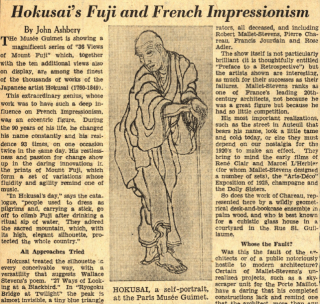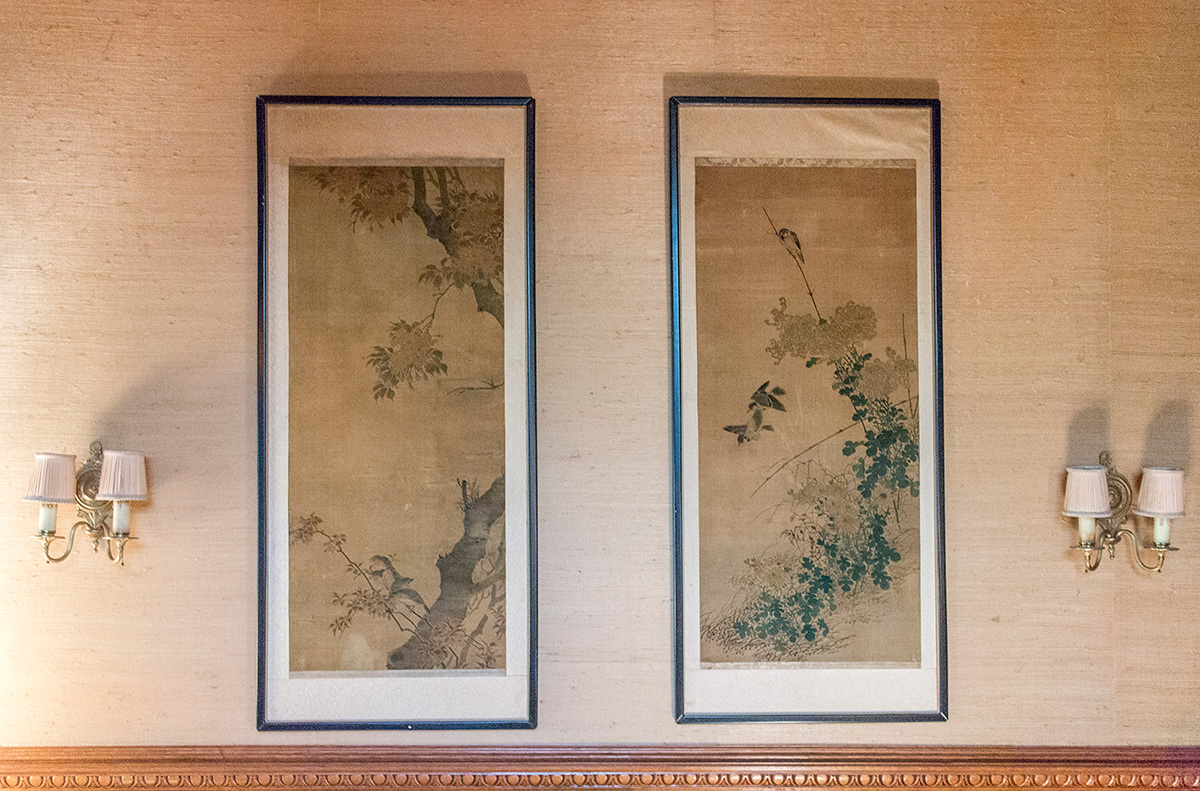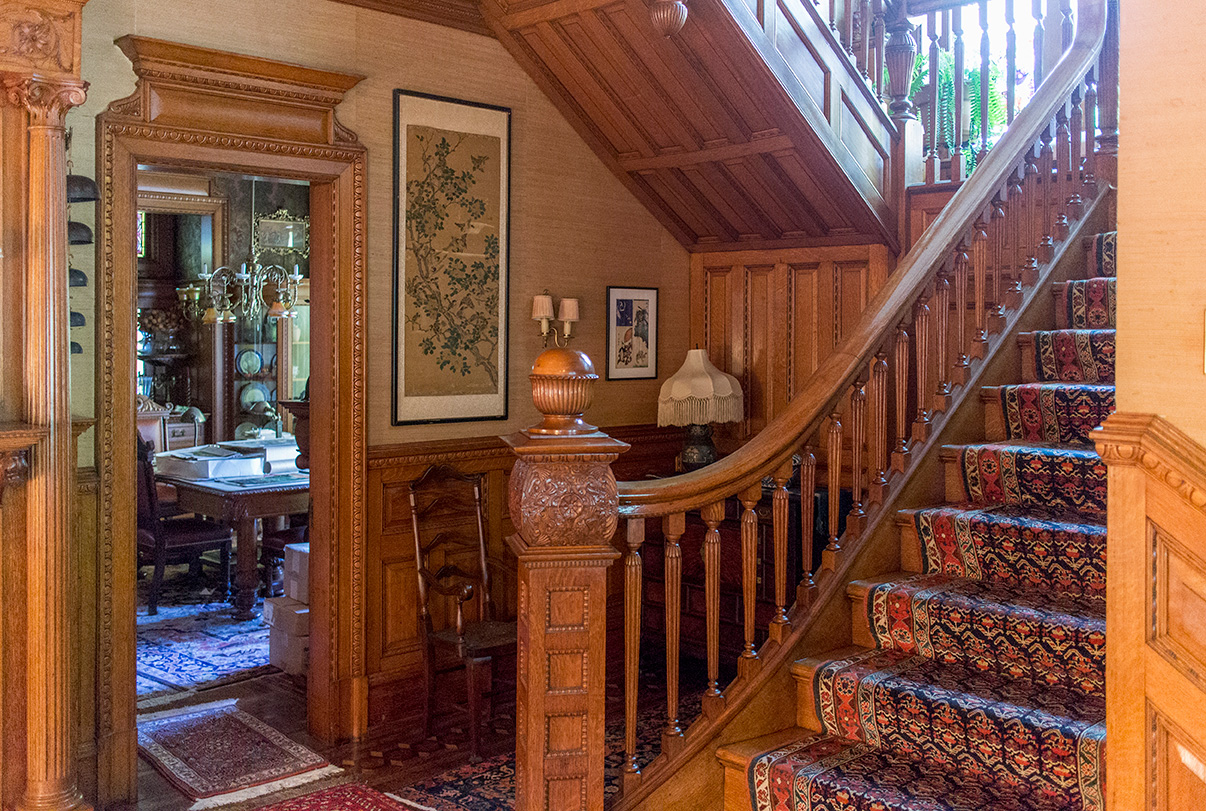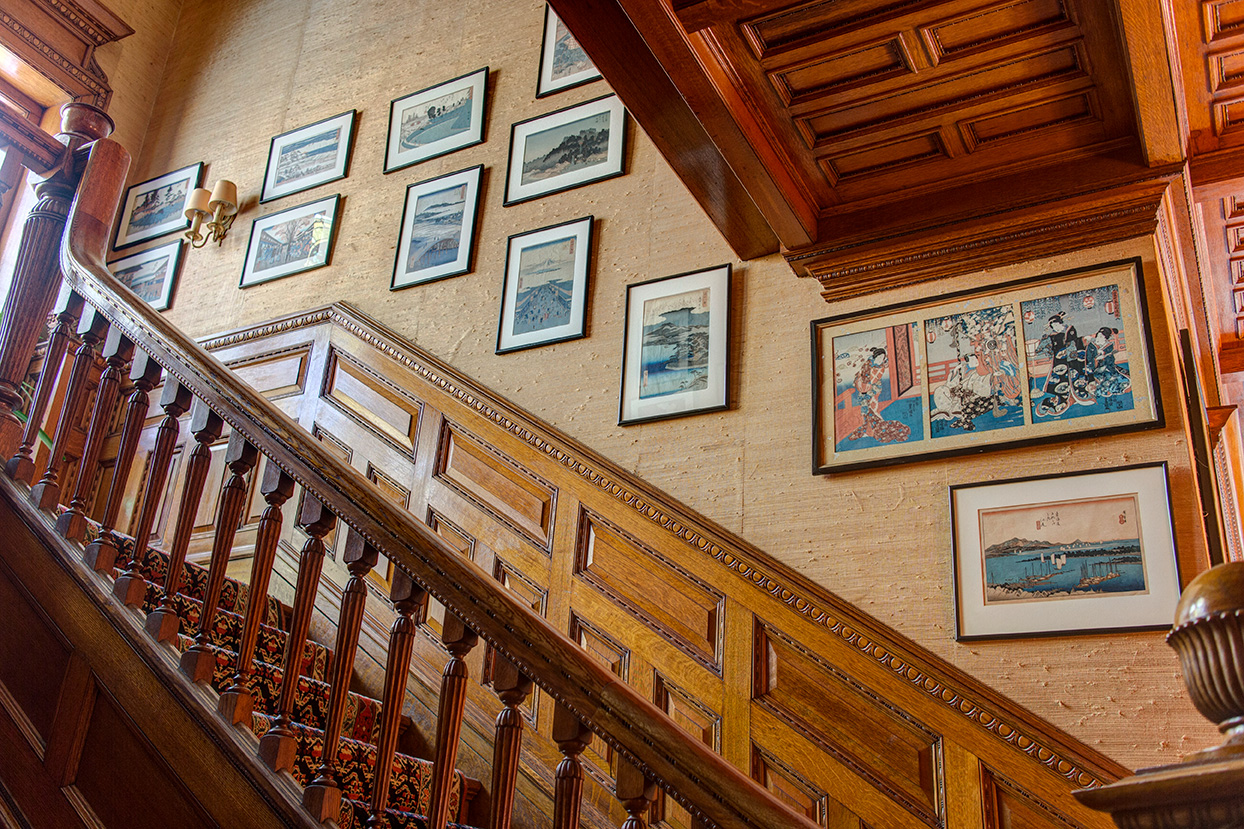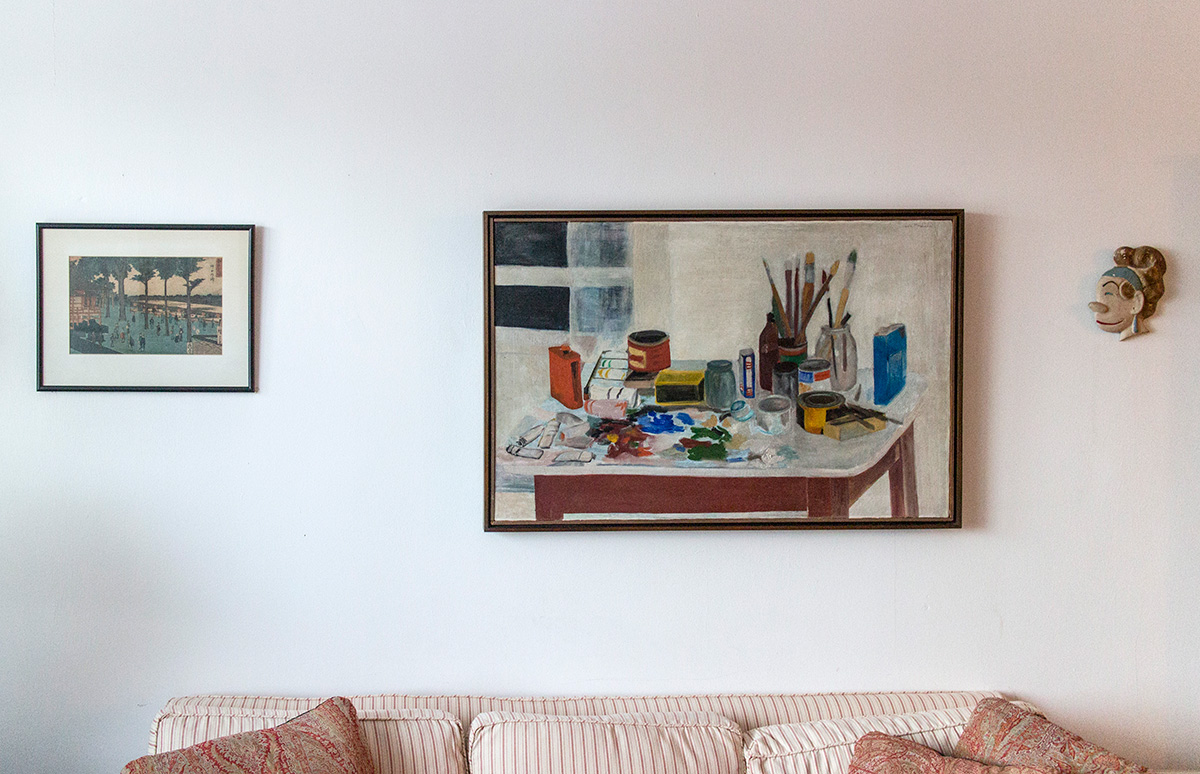Ashbery and Japanese Art
As an art critic for the Paris edition of the New York Herald Tribune, Ashbery reviewed a new and marvelous exhibit of Hokusai images on January 11, 1961. Calling Hokusai “that extraordinary genius,” he concluded that not only had Hokusai influenced French Impressionists, but also that contemporary artists would “do well to study the innovations of Hokusai.” In another review a year later of “Four Shows of Oriental Art” (December 12, 1962), Ashbery explained his interest in Japanese scenes further: “the poetry and painting not only complement each other, but form a single entity, delicate and tragic in feeling.”
Collected over more than a decade, discovered in at least a half-dozen different antique stores and stalls in three different countries (England, France and the United States), John Ashbery’s collection of framed images by the two greatest Japanese landscape artists, Katsushika Hokusai (1760-1849) and Utagawa (or Andō) Hiroshige (1797-1858), are displayed on the grasscloth walls of the Center Hall, extending up the main staircase.
Both artists were born in Edo (now called Tokyo) and painted scenes from nature onto woodblocks that were then reproduced (a single woodblock could produce as many as 10,000 prints). Although drawn to similar scenes, they otherwise worked in very different styles. While Hokusai’s “proud and lonely” pictures suggest “a theater scene,” Hiroshige’s works, on the other hand, are more intimate and melancholy. As Japanese art historian, Muneshige Narazaki, explains, Hiroshige’s works, often called ukiyo-e, which means “literally ‘floating-world pictures,’” almost always conjure a mood:
Hiroshige is at his best in depicting the beauty of a landscape, whether peopled or not, as it appears in snow, rain, mist and the like…he was the first artist to give full expression in print form to the Japanese awareness of the mingled sadness and beauty of life. (from Hiroshige: The 53 Stations of the Tōkāidō)
Ashbery’s collection of prints highlights some connections between these two quite distinct artists. The two Hokusai scenes—of a bird and the moon—are precise and stark. In many of the Hiroshige scenes, on the other hand, people gather and socialize, but we are reminded of the ephemerality of life by the looming, majestic snowy mountain in the distance or the river that surrounds them.
Ashbery also owns two Hiroshige triptychs, which are displayed in his New York City apartment.

